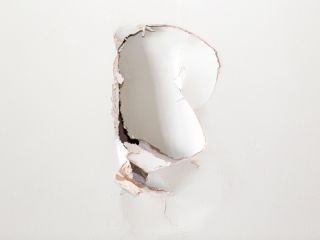Redesign your interiors with the help of Drywall Installation Ogden Utah and professional painting ideas.
Important Tips for Effective Drywall Repair and Installation Techniques
Reliable drywall fixing and installation requires a careful technique. Comprehending the types of drywall and having the right devices is vital. Appropriate methods and precise dimensions can significantly impact the outcome. Several neglect essential steps like taping and sanding, which can make or damage the last appearance. As tasks advance, usual obstacles might emerge that require interest. Checking out these ideas can result in an extra refined and effective finish.
Recognizing Different Kinds Of Drywall
Comprehending the various sorts of drywall is necessary for any type of successful repair service or installation project. Drywall, frequently called plaster board, is available in a number of selections tailored for certain applications. Standard drywall is the most widely used type, ideal for basic interior wall surfaces and ceilings. Moisture-resistant drywall, frequently green in shade, is developed for areas prone to moisture, such as shower rooms and kitchens. Fireproof drywall, generally tinted pink or purple, is crafted to endure greater temperature levels and is frequently made use of in garages or near heaters. Furthermore, soundproof drywall helps in reducing sound transmission, making it appropriate for multi-family homes or videotaping workshops. Specialized drywall, like cement board, is used in wet areas like showers or bathtub borders. Understanding these types helps in selecting the right product for every task, making sure toughness and efficiency out of commission or brand-new installations.
Vital Tools for Drywall Repair Work and Installation
Having the right devices is essential for reliable drywall repair work and installment. A high quality energy knife is critical for cutting drywall sheets specifically. A drywall T-square assists ensure straight sides, while a taping blade is required for using joint substance smoothly over seams. Furthermore, a drywall saw enables reducing out harmed sections or fitting drywall around components.
For hanging drywall, a power drill with drywall screws is essential, as it enables quick and secure setup. A level is also essential to verify that the drywall is straight and effectively lined up. Once it has dried out, a fining sand block or post sander is necessary for smoothing out joint compound. A determining tape is important for exact dimensions, protecting against waste and making certain a correct fit. Outfitted with these devices, individuals can take on drywall projects efficiently, bring about professional-looking outcomes.
Step-by-Step Overview to Fixing Holes and Cracks
When attending to openings and splits in drywall, having the right devices and products is essential for an effective repair work. This overview describes the necessary items and supplies a clear, detailed procedure to successfully restore the surface area. Recognizing these components will certainly assist ensure a smooth surface and lasting outcomes.
Tools and Materials Needed
A well-equipped toolkit is vital for efficient drywall fixing and setup. Secret tools include an utility blade for reducing drywall, a measuring tape to assure exact sizing, and a drywall saw for bigger openings. A putty knife is necessary for applying joint compound smoothly, while a fining sand block or pole sander assists accomplish a smooth coating. For patching, a roll of fiberglass mesh tape or paper tape is required to reinforce joints. In addition, a drill and screws are required for securing brand-new drywall items. Crucial products are composed of joint compound, primer, and paint to finish the repair. Having these devices and products accessible assures a smoother, a lot more reliable fixing procedure, producing professional-looking results.
Fixing Refine Actions
Fixing openings and cracks in drywall requires a methodical technique to guarantee a smooth coating. First, the area bordering the damage must be cleaned extensively to eliminate dust and particles. Next off, for tiny cracks, a putty blade is made use of to use a joint compound evenly over the location. For bigger openings, a spot is required; the harmed area is removed, and a brand-new item of drywall is suited location, safeguarded with screws. As soon as the spot remains in placement, joint substance is related to mix the sides. After drying, sanding the location smooth is crucial. The fixed surface area needs to be topped and painted to match the bordering wall surface, making certain a low-profile repair.
Methods for Putting Up Drywall Panels
Mounting drywall panels calls for cautious preparation and precise execution to ensure a smooth and specialist coating. First, it is necessary to determine the wall area precisely and reduce the panels to fit, making sure that they straighten with the studs. Placing the panels horizontally is usually advised, as this can enhance the structural integrity and reduce the variety of seams.
Utilizing drywall screws, installers ought to safeguard the panels every 16 inches along the studs, ensuring a firm hold. It is important to stay clear of overdriving the screws, which can damage the paper surface. For edges and edges, making use of an energy knife enables clean cuts and a snug fit.

Finishing Touches: Insulation, Mudding, and Sanding
Once the drywall panels are firmly in position, the next important action entails the complements of taping, mudding, and sanding. Insulation is necessary for creating a smooth shift in between panels and hiding joints. A quality drywall tape, either paper or fiberglass fit together, should be applied over the joints, guaranteeing it adheres effectively to the mud that will be applied following.
Mudding, or using joint compound, adheres to the taping procedure. This compound fills gaps and ravel the surface. A very first layer must be used kindly, feathering the edges to blend with the drywall. After the preliminary coat dries, succeeding layers may be required for a remarkable finish.
Lastly, fining sand is necessary to achieve a smooth surface area. A fine-grit sandpaper ought to be made use of to gently ravel any kind of imperfections. Care should be required to stay clear of over-sanding, which can harm the drywall - drywall contractor. Effectively executed, these completing touches create an expert look prepared for paint
Tips for Maintaining Your Drywall After Setup
Maintaining drywall after installation is vital to protecting its appearance and structural integrity. Regular cleaning is needed; dirt and Read Full Report dirt can gather, so gentle wiping with a moist towel is recommended. Home owners should likewise check website here for any indications of dampness or mold and mildew, specifically in high-humidity areas like cooking areas and bathrooms. If any type of damage occurs, it's crucial to resolve it without delay to avoid more problems.
Using furniture pads can help avoid scratches or dents from hefty things. Furthermore, repainting the drywall with a high-grade, washable paint provides an extra layer of defense and makes future cleansing simpler. Avoid making use of abrasive cleaners or tools, as these can damage the surface. Preserving a stable interior environment with suitable humidity levels will certainly assist prevent buckling or cracking over time. By following these pointers, one can guarantee that drywall remains in outstanding condition for years to come.
Often Asked Concerns
How Lengthy Does Drywall Require To Totally Dry After Installation?

Can I Set Up Drywall Over Existing Drywall?
Yes, drywall can be set up over existing drywall, but it is vital to guarantee the underlying surface area is safe and effectively prepared. This technique can boost insulation and lower installment time, though it might add weight.
What Is the Ideal Method to Soundproof Drywall?
The finest means to soundproof drywall involves utilizing specialized soundproofing products, such as durable channels, acoustic caulk, and sound-dampening drywall. These methods successfully lessen audio transmission in between spaces, improving overall acoustic performance in living areas.
Just how Do I Select the Right Drywall Density?
To pick the best drywall density, take into consideration the application and area. Criterion household walls go to this website usually use 1/2 inch, while ceilings or specialized locations might require 5/8 inch for extra toughness and soundproofing capabilities.
Are There Eco-Friendly Drywall Options Available?
Yes, environmentally friendly drywall choices are readily available. These consist of items made from recycled products, gypsum boards with low volatile natural substances (VOCs), and those utilizing sustainable production processes, offering environmentally-conscious selections for construction and improvement projects.
Having the right tools is vital for reliable drywall fixing and setup. For hanging drywall, a power drill with drywall screws is important, as it enables quick and safe installment. Key tools include an utility blade for reducing drywall, a tape procedure to ensure precise sizing, and a drywall saw for bigger openings. Yes, drywall can be mounted over existing drywall, however it is essential to guarantee the underlying surface is safe and properly prepared. The finest means to soundproof drywall includes utilizing specialized soundproofing products, such as resistant networks, acoustic caulk, and sound-dampening drywall.